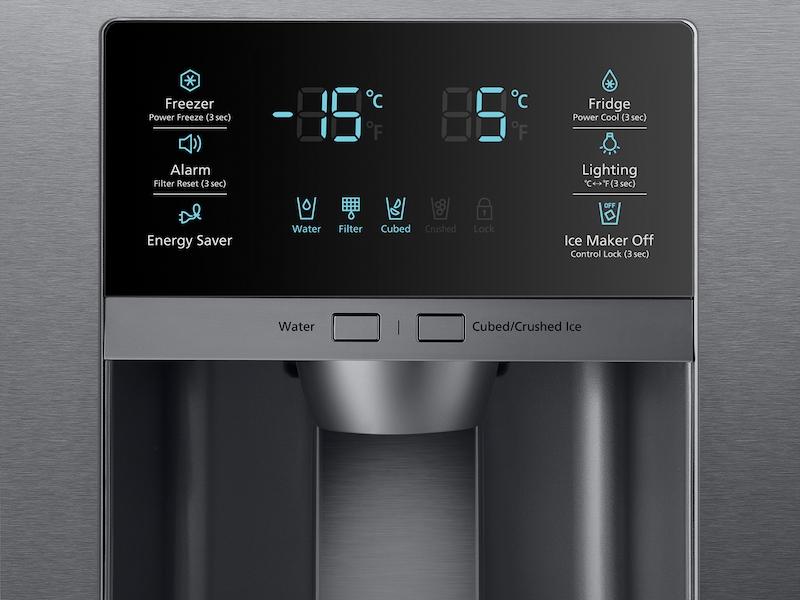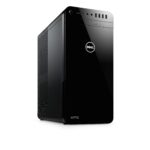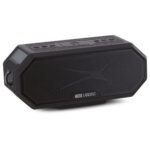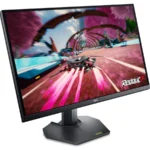Refrigerators have evolved into complex machines with built-in diagnostic systems. These systems use error codes to alert users about potential issues. Error codes serve as a communication tool between the appliance and its owner, providing valuable insights into the refrigerator’s performance and maintenance needs.
Understanding refrigerator error codes can help owners maintain their appliances effectively. These codes appear on the control panel and indicate specific problems. By interpreting these codes correctly, users can address issues promptly, potentially avoiding costly repairs and extending the life of their refrigerator.
Deciphering Refrigerator Error Codes: A Troubleshooting Guide
Modern refrigerators often have electronic panels that display error codes when something goes wrong. These codes can seem cryptic, but they provide valuable clues for diagnosing and fixing problems. Here’s a general guide to common refrigerator error codes:
Note: Error codes can vary significantly between brands and models. Always consult your refrigerator’s user manual for the specific meanings of codes for your appliance.
Common Error Code Categories
- Temperature Errors: These codes indicate problems with maintaining the desired temperature.
- Examples: “F1,” “E1,” “HS,” “CF”
- Possible Causes: Faulty thermostat, defrost sensor, evaporator fan motor, condenser coils.
- Door Ajar Errors: These codes signal that a door has been left open for an extended period.
- Examples: “dO,” “OP,” “dr”
- Possible Causes: Door not closing properly, obstruction preventing closure, faulty door switch.
- Ice Maker/Water Dispenser Errors: These codes indicate problems with the ice maker or water dispenser system.
- Examples: “Er IF,” “E5,” “W2”
- Possible Causes: Frozen water line, clogged filter, faulty ice maker module, water inlet valve issue.
- Communication Errors: These codes suggest a communication problem between different components of the refrigerator.
- Examples: “CO,” “Cn,” “Er FF”
- Possible Causes: Faulty control board, wiring issue, loose connections.
- Sensor Errors: These codes indicate a problem with one of the refrigerator’s sensors.
- Examples: “S1,” “SE,” “Er rS”
- Possible Causes: Faulty temperature sensor, defrost sensor, humidity sensor.
Troubleshooting Steps
- Identify the Error Code: Note down the exact code displayed on the panel.
- Consult the User Manual: Look up the code in your refrigerator’s user manual. It should provide an explanation of the error and possible causes.
- Basic Checks:
- Power Cycle: Unplug the refrigerator for a few minutes and then plug it back in. This can sometimes reset the system and clear temporary errors.
- Check Connections: Ensure the refrigerator is properly plugged in and that there are no loose connections.
- Inspect Door Seals: Make sure the door seals are clean and intact, allowing for proper closure.
- Clean Condenser Coils: Dust buildup on the condenser coils can hinder cooling efficiency. Clean them with a brush or vacuum cleaner attachment.
- Specific Troubleshooting: Based on the error code and potential causes, try some specific troubleshooting steps. For example, if it’s an ice maker error, check the water line for freezing or the filter for clogging.
- Contact a Technician: If you’re unable to resolve the issue with basic troubleshooting, it’s best to contact a qualified appliance repair technician. They have the expertise and tools to diagnose and fix more complex problems.
Remember: Safety first! Always disconnect the power supply before attempting any repairs or maintenance on your refrigerator.
Table Of Refrigerator Fault Codes
| Fault Code | Definition | Possible Causes | Troubleshooting Steps |
|---|---|---|---|
| FF | Check frozen food for thawing because the temperature is rising too high. | Door left open Faulty door seal Overloaded freezer Cooling system malfunction | Ensure door is closed properly. Check door seal for damage and clean it. Remove excess items from the freezer. Check for adequate airflow around the refrigerator. If problem persists, contact a technician. |
| PF | The power to the refrigerator has been interrupted. | Power outage Loose power cord Tripped circuit breaker | Check if other appliances are working. Ensure the power cord is securely plugged in. Check the circuit breaker and reset if necessary. |
| CI | Check the icemaker for proper operation. | Frozen water line Clogged water filter Faulty ice maker module | Check water line for any kinks or blockages. Replace the water filter. If problem persists, contact a technician to check the ice maker. |
| DE | Demo mode. This mode enables normal light and controls functionality while disabling the cooling system. | Accidentally activated demo mode | Unplug the refrigerator for a minute or two, then plug back in. If DE code persists, contact the manufacturer with the model number. |
| dE | The defrost system has not operated properly in the last 24 hours. | Faulty defrost timer Defrost heater malfunction Defrost sensor issue | Contact a technician to diagnose and repair the defrost system. |
| CC | Check the temperature controls because the temperature for the refrigerator is incorrect. | Incorrect temperature settings Faulty thermostat Cooling system malfunction | Adjust the temperature settings. If problem persists, contact a technician to check the thermostat or cooling system. |
| tC | Turbo Cool setting indicator (normal function code) | Turbo Cool feature is activated | No action needed. This is a normal function code. |
| tF | Turbo Freeze setting indicator (normal function code) | Turbo Freeze feature is activated | No action needed. This is a normal function code. |
Key Takeaways
- Error codes help users identify refrigerator problems quickly
- Proper interpretation of error codes can prevent expensive repairs
- Regular monitoring of the control panel aids in appliance maintenance
Error Codes: Essential for Refrigerator Maintenance
Modern refrigerators come equipped with advanced diagnostic systems. These systems use error codes to alert users about potential issues. When a problem occurs, the fridge displays a specific code through flashing lights or beeps. This feature helps pinpoint the exact issue, making repairs easier and more efficient.
Error codes serve several key purposes:
- Quick problem identification
- Reduced downtime
- Improved maintenance scheduling
- Lower repair costs
By understanding these codes, homeowners can often troubleshoot minor problems themselves. For more complex issues, technicians can arrive prepared with the right tools and parts, streamlining the repair process.
Streamlining Repairs with Digital Diagnostics
Error codes on refrigerators simplify troubleshooting. These built-in messages act as digital guides, pinpointing issues quickly. Technicians can diagnose problems faster, saving time and effort. Homeowners benefit too, often able to resolve minor issues without professional help.
• F1: Temperature sensor fault
• F2: Defrost system malfunction
• F3: Fan motor problem
Error codes vary by brand and model. Consult the user manual for specific meanings and solutions.
Refrigerator Error Codes Explained
Refrigerators often display error codes to alert users of potential issues. These codes vary by manufacturer but some common themes exist.
Temperature sensor errors indicate problems with fridge or freezer sensors. They may fail to read temperatures accurately or at all. Defrost sensor errors point to issues in the defrosting system, possibly due to incorrect temperature detection during defrost cycles.
Door open errors suggest sealing problems. Users should check door seals to ensure they’re airtight. Fan motor errors can signify issues with evaporator or condenser fans, which may not be spinning properly or at all.
Water dispenser or ice maker errors highlight potential problems in these systems. Water flow issues or ice maker jams are common culprits.
GE Appliances use specific codes to help technicians diagnose issues quickly. A flashing green code on the control panel typically indicates a detected failure.
Some Whirlpool refrigerators display codes like “5E” for defrost system problems or “88 88” with a flashing line for electronic communication interruptions. The specific flashing line identifies the failure type.
Users should always consult their refrigerator’s manual for precise code meanings and recommended actions. Regular maintenance can help prevent many issues that trigger these error codes.
Decoding Error Messages: DIY Fixes vs. Professional Help
Error codes can guide homeowners in addressing appliance issues. Some problems are simple enough for DIY solutions. Others need expert attention.
For oven control board problems, a quick reset might suffice. Unplugging the appliance for a few minutes can often resolve minor glitches.
More complex issues may require a repair service. Electrical faults or sensor malfunctions typically need professional diagnosis.
A service technician can accurately interpret error codes and perform necessary repairs. They have specialized tools and knowledge to tackle intricate problems safely and effectively.
Troubleshooting Refrigerator Error Codes
Resolving refrigerator issues often involves resetting error codes and ensuring proper function. This process typically begins with unplugging the appliance for safety. Many refrigerators use specific button combinations to clear error messages. Regular upkeep helps prevent problems.
Checking the wire harness connection can resolve some errors. If a power outage occurs, inspect the circuit breaker or fuse box. Clean condenser coils and examine door seals regularly to maintain optimal performance.
Key maintenance tips:
• Clean coils every 6 months
• Check door seals quarterly
• Monitor for unusual noises or temperature changes
By following these steps, homeowners can often resolve minor issues without professional help. Regular care extends appliance life and improves efficiency.
Limits of Error Code Dependence
Error codes provide valuable diagnostic information but should not be the sole focus. Regular checks and awareness of unusual sounds or behaviors in refrigerators are equally important. Error codes point to issues but don’t give complete solutions.
Relying too heavily on error codes can miss other problems. Visual inspections can catch issues that don’t trigger codes. Listening for odd noises helps spot mechanical troubles early. Monitoring performance identifies efficiency drops before failure.
Error codes complement other maintenance practices. They work best as part of a broader approach to appliance care.
Overall
Error codes in refrigerators serve as vital diagnostic tools. They help spot issues early and guide repair efforts. It’s smart to learn your fridge’s specific code system. Keep the user manual handy for quick reference.
Regular fridge checks can prevent bigger problems. Knowing common error codes saves time and money. But remember, codes are just clues. Sometimes, a pro’s touch is needed for complex repairs.
Stay alert to your fridge’s sounds and performance. Quick action on error codes keeps food fresh and energy bills low.







